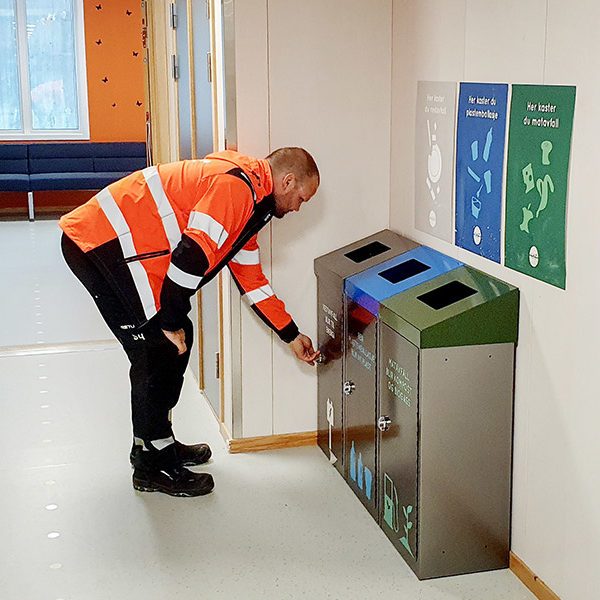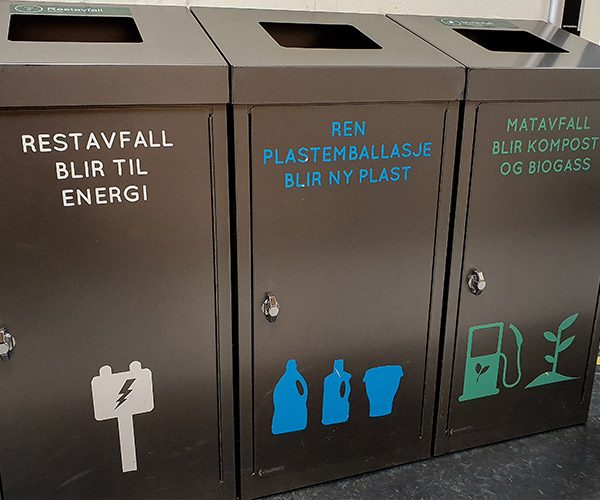Case study – Rana municipality
The third most populated municipality in Northern Norway has since 2016 invested in a green transition. The modern industrial municipality of Rana wants to meet a sustainable future with new, smart solutions.
Smart design was crucial in the north
A waste disposal company with great ambitions, personal involvement in the municipality’s cleaning department and a local design agency have together simplified waste sorting in Rana municipality.
Communications manager Geir Benden at Helgeland Avfallsforedling (HAF) is proud of the overall design of HAF and Retura, which HAF has achieved in Rana.
– We wanted a uniform, playful profile with many symbols that were visually easy to understand for everyone, he says.
With the main focus on making the profile as recognizable and as similar to the source sorting that the citizens already had, the entire municipal sector was put on the agenda.
– We have worked closely with our owners and when we presented the solutions to the school administration, the feedback was that this was easily understandable for both pupils and staff.
Benden goes on to say that while previously it was HAF who contacted the schools to come and hold information meetings about the source sorting, now it is the other way around: the schools make contact to be included in the sorting scheme.

Ergonomics and design
The first step to a greener Rana, was an excursion to other municipalities that had found good solutions for waste and source sorting. A zone manager in cleaning with an eye for ergonomically correct design meant that the Aursund waste container from Røros Produkter is today stationed in six of eleven school buildings, the Helgeland Campus and the City Hall. The municipality’s ambition is eventually to have environmental stations in several buildings, as well as in all schools.
– That is correct, says Cathrin Hansen Jakobsen. She is department head of cleaning in the municipality and is very satisfied with the choice that was made.
– The importance of a functional waste container and fewer units when the cleaners had to cover several square meters in a shorter time could be a contribution to making cleaning more efficient. But that wasn’t all. There was a whole list of criteria that had to be met when new waste containers were to be chosen. They had to be:
- Durable
- Easy to clean
- Ergonomically correct
- Fireproof
– In addition, they had to invite people to use it, says the cleaning manager. The choice simply fell on Aursund from Røros Produkter because the design was smart and easy to clean.
The slanted insertion means that you cannot put anything down on top of the container, and forces the user to make an active choice for the waste. The units can be connected

Increased awareness for green thinking
Leaflets in green and blue have been distributed to residents, training courses have been held in schools and blue and green garbage trucks are driving around the city. Clear and simple illustrations tell the story of waste from trash to resource.
HAF says that awareness of source sorting has increased, and not least commitment.
– The waste containers are intuitive. The colors that you recognize and the fact that they are easy to empty both for the cleaners and our waste disposal workers mean that everyone is satisfied, says Benden.